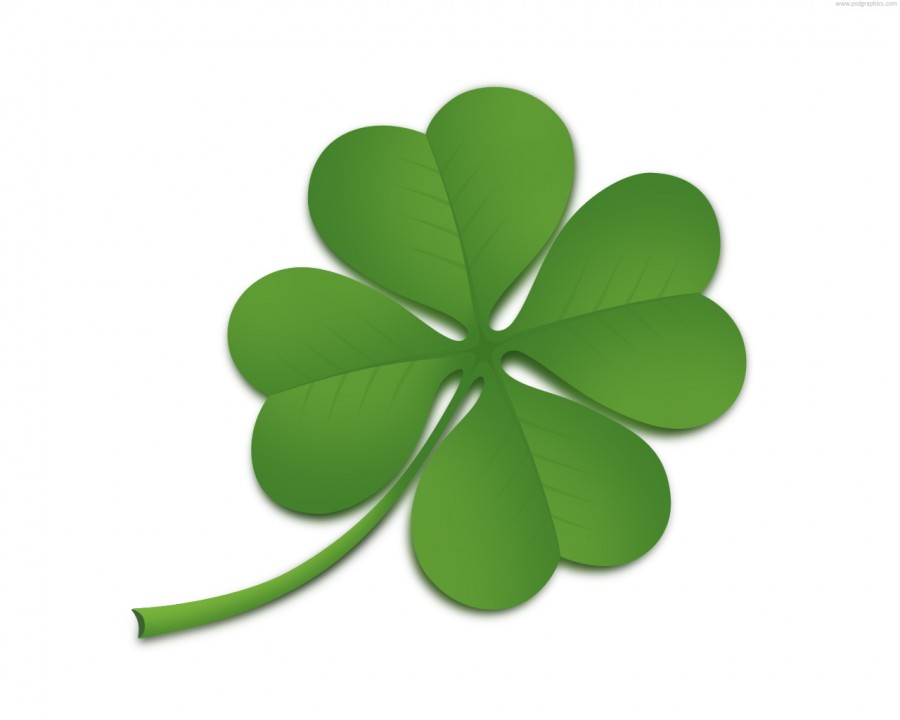St. Patrick’s Day: The One Occasion When It’s Easy Being Green
April 18, 2016
March 17th: the day in which green cloaks every object in sight, the stench of cabbage permeates every other home, shamrocks have their single day of yearly recognition, and everyone conveniently claims their great-great-great-great grandfather’s cousin twice-removed immigrated a hundred years ago. St. Patrick’s Day stands as the most notable and celebrated March holiday, celebrated for over 1,000 years in Ireland, but now a globally commemorated celebration to the patron saint of Ireland. Though its modern image stands as an alcohol-fueled, green-tinted day of poorly-imitated Irish greetings of “top-o’-the-mornin’-to-ya”s “good day, laddie”s, the day holds a much richer, surprisingly religious history, one that may stand as more culturally diverse than most know.
If you’re covering the history of St. Paddy’s day (and yes, it’s two “D”s, not “T”s; the term is derived from the traditional Irish name, Pádraig), you ought to start with the man who began the day. His story is one that begins, actually, outside of Ireland. Born to a religious, wealthy family in Roman Britain around the 5th century A.D., his legacy would not enter Ireland’s until he was captured by pirates, taken to the land, and sold into slavery. During his six years of servitude, he reportedly turned to Christianity to guide him through the ordeal, growing so deeply devoted that some accounts say he prayed as many as one hundred times a day. He viewed his bondage as “God’s test of his faith.” He had a vision in which he saw the pagan children of Ireland reaching their hands out to him. He took it as an increasing herald to convert the Irish to Christianity. Although he was able to escape back to his home, the missionary call plagued Patrick, and around 431, the Pope sanctified the man as Bishop of Ireland. Patrick was sent back to spread the gospel and support the Christians already there. Initially met with resistance, Patrick managed to spread his Christian teachings far and wide through preaching, writing, and baptisms that blended current pagan rituals in place with the new practices of the Church. It is Patrick who is credited with creating the classic Celtic cross that’s associated with the country, something that stood to combine the native sun-worshipping philosophy of the people with that of the Christian cross. It’s also the saint who established the shamrock as the unofficial-official plant of the day, the ancient symbol of rebirth of spring. St. Patrick utilized the leaf to explain the Holy Trinity of Christianity. The changes invoked proved so monumental that they created the foundation for the majority Catholic population as it stands today. St. Patrick continued this work until his death in 461 A.D. and, though he was never canonized as a pope, Patrick is on the list of saints declared a Saint in Heaven, officially recognized by the Vatican in 1631.
As a holiday that’s dedicated to the Bishop of Ireland, why is this a staple in countries from the west to the eastern span of Australia? Surprisingly, the raucous parties we associate with the festivities were nonexistent in Ireland up until the 20th century; it wasn’t even made a public holiday until 1904. Up through the 1950s, it was a solemn occasion: mass in the morning, the Dublin military parade at noon, and the bars across the country closed for the day. The 1960s marked the turn to the more general parade which, through the decades, morphed into the St. Patrick’s Day Festival of today– an annual four-day event of music, treasure hunts, performances, and a two-hour parade drawing half a million people. The shift to a more lively observance, however, owes a nod to what Time calls, “the real home of St. Patrick’s Day, the U.S.” It was in Boston that the first recorded celebrations of March 17th took place in 1737 with a dinner among an elite group of Irish men living in the Massachusetts colony. The day grew in significance in the 19th century as more and more Irish immigrated to America. Against the increasingly resentful nativist sentiment dubbing the Irish “drunken, violent, criminalized, and diseased,” they strived to find outlets to display their civic pride and iron-strong identity. St. Patrick’s Day was their chance to show who they were.Through speech and symbols commemorating the day, primarily in small Irish districts, Irish-Americans celebrated their Catholic faith, patron saint, and Irish nationalist spirit. The celebration was one of the immigrant’s own, as Time call them, “hybrid identity” — a belief in the future of Ireland as a nation free of British rule and welcome to the liberties of the U.S. The event only grew from there, moving to the streets of other Irish-centric cities and beyond in the face of the prejudice and xenophobia to show the growing presence and power of these Irish-Americans. By the turn of the 20th century, March 17th had become such a ubiquitous celebration that people without any Irish heritage were taking part, making it the perfect opportunity for the “marketing bonanza” we’ve created for it.
What about the rest of the commonly-held associations to the holiday: the green, the shamrocks, the food, the leprechauns and their gold? Much like the origins of the modern celebrations of the holiday, the customs have evolved. The “traditional” meal of corned beef and cabbage, for instance, is a far more American dish than the Irish one we would assume it to be. Most historians trace it back to the 19th century when most Irish-Americans were poor and could afford only the cheapest meat possible. From their thrifty Jewish neighbors, they learned that corned beef could act as a far more affordable and efficient substitute for their traditional Irish bacon. Cabbage has long been seen as an Irish food, but its use here is likely more due to its harvest in the spring, lining up perfectly for the March holiday. Much like the holiday itself, the spread of the meal in popularity flowed from city to city, and became a St. Patrick’s Day staple. Speaking of green: no, the color wasn’t sported in St. Patrick’s robes during his missionary work. Or, at least, there’s no record of such. In fact, many accounts say blue was the first color associated with St. Patrick’s Day, but it changed around the 17th century to green. As a color of Ireland’s tri-colored flag, green represents the “Emerald Isle”s green landscape, spring date on the calendar, and the shamrock. As for why we pinch those who go without the color on the day? According to Luke Aheran, owner of the Irish Cultural Museum in New Orleans, this is another Americanized tradition dating back to the 1700s. Apparently, leprechauns can’t be seen. They’re mischievous, so people pinch you to remind you that if you’re not wearing green, you’ll get pinched by a leprechaun. As for why these mythical little guys come out to plague folks on the day? Ireland fables say they are shoemaking fairies who live alone and spend their days looking for gold, so a day dedicated to honoring Irish tradition wouldn’t be complete without them.
Though St. Patrick’s Day celebrates the plentiful, prolix history of Ireland, it’s grown into an observation of more than Irish culture. It is a mark of all the places to which the Irish have immigrated. So raise a glass and toast, not only the rolling, rich, green of Ireland, but the blots of red, white, and blue America has left on it.




